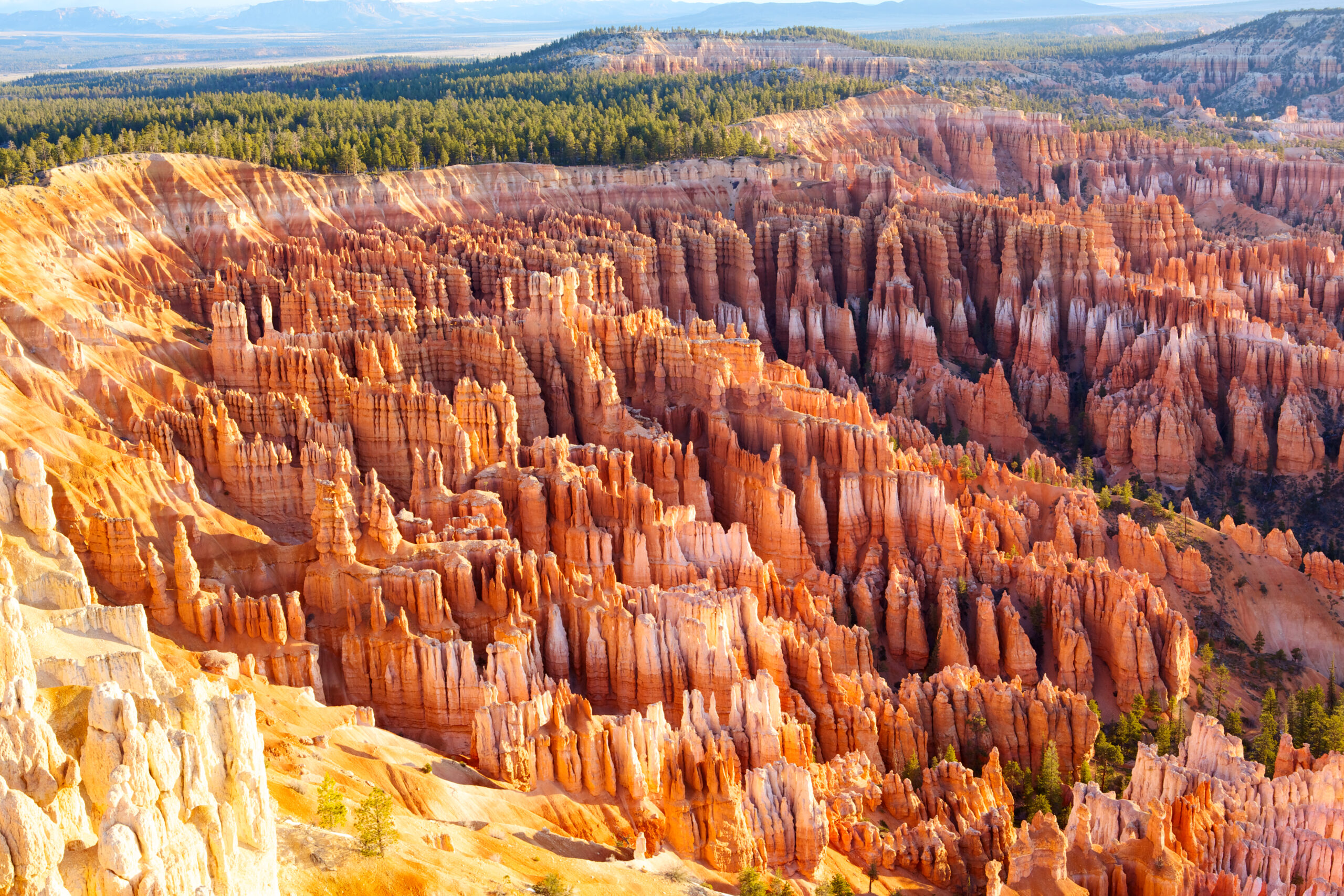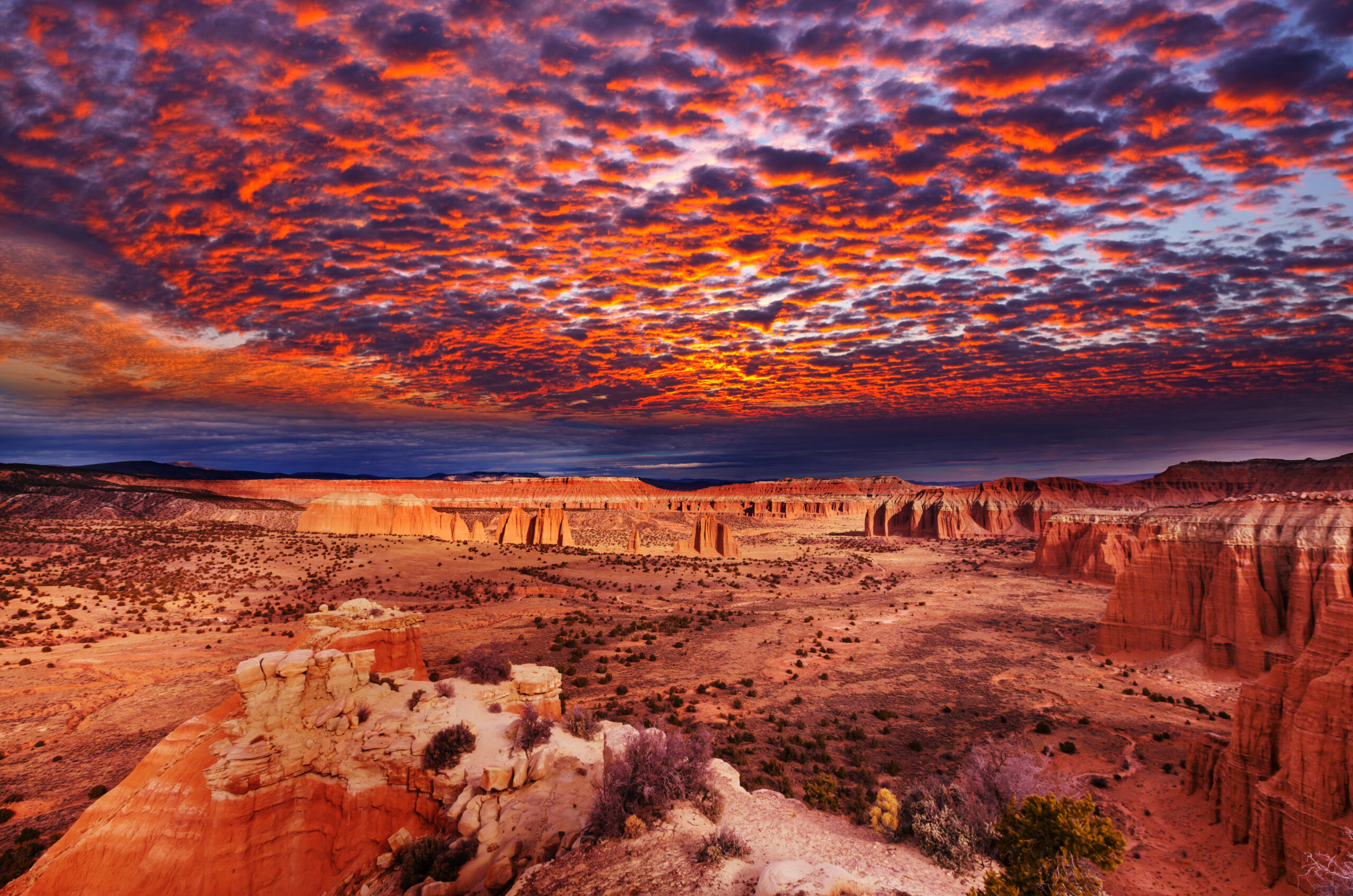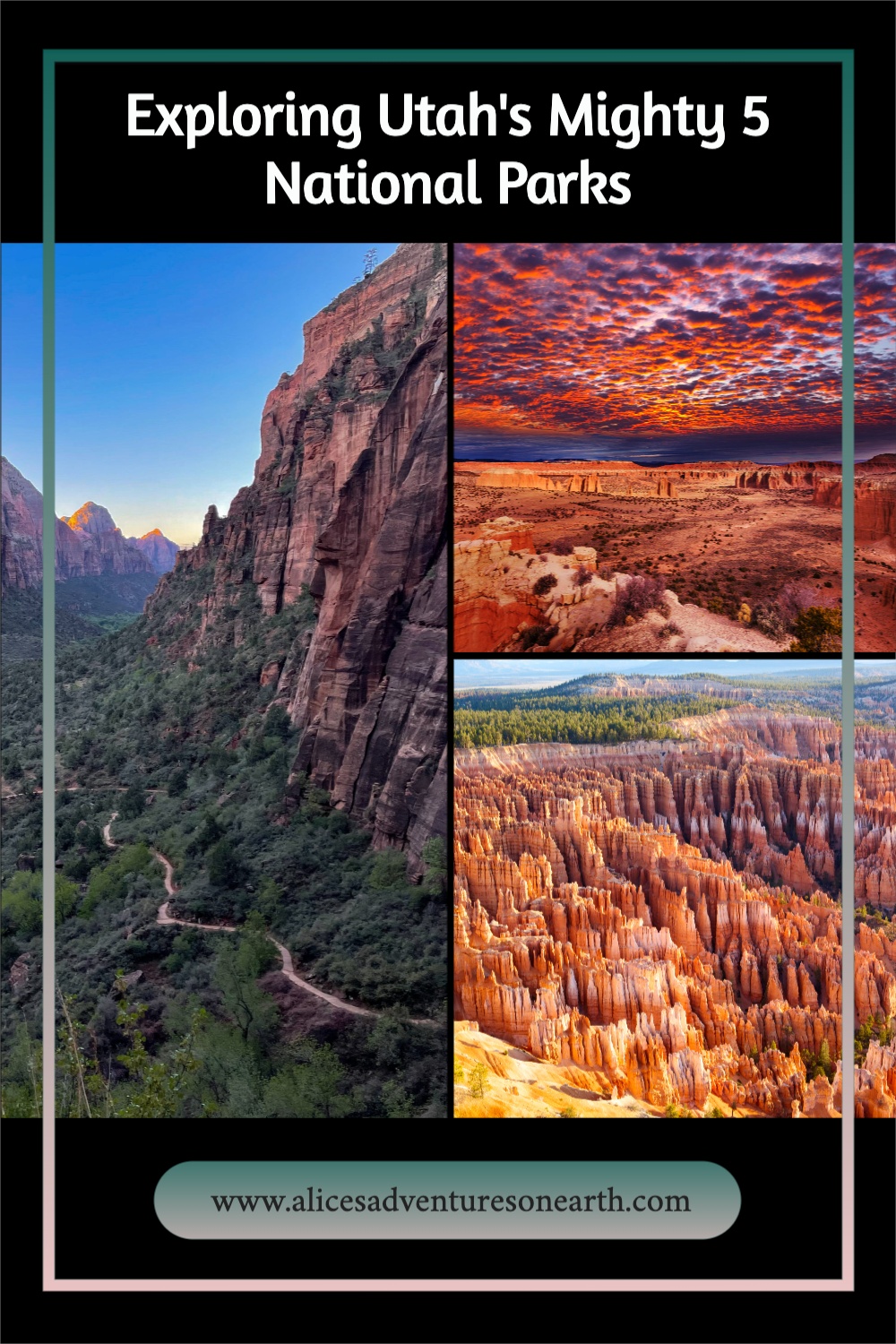Planning the Perfect Mighty Five Utah National Park Road Trip
Offering endless adventure and spectacularly scenic views, the Mighty Five in Utah—the state’s five national parks—are some of the most beautiful areas in the United States. Encompassing Arches, Bryce Canyon, Capitol Reef, Canyonland, and Zion, the Mighty Five span over 800,000 acres of rugged landscape across southern Utah. While a visit to any one of these parks is bound to be unforgettable, trust me when I say a road trip to all five is the experience of a lifetime.
I’ve had the privilege of traveling to the Mighty Five, and it was an absolutely incredible adventure—one that I cannot wait for you to experience. So, without further ado, here’s everything you need to know to plan the perfect Mighty Five Utah road trip experience!
From Bryce Canyon to Arches, these Utah national parks should top your bucket list with fantastic rock formations, endless blue skies, and exhilarating trails. I’ll show you how to make the most of your trip through the Mighty 5. Disclosure: This post may contain affiliate links, and I may earn a small commission from your purchase at no cost to you.

The Best Road Trip Itinerary for Utah’s Mighty 5
To start out your road trip, I recommend flying into Salt Lake City International Airport. This is the closest major airport in Utah to the Mighty 5 and one that offers a plethora of car rental options for you to utilize. From here, it’s about a four-hour drive to our first destination.

Stop 1: Bryce Canyon National Park
Known for its otherworldly terrain, Bryce Canyon is home to the Earth’s largest collection of hoodoos. These towering spires of rock blanket the park in vivid shades of red and orange, creating a kaleidoscope of colors—especially during sunrise and sunset.
To get the best vantage point of the landscape and its vibrant colors, visit some of the park’s many overlooks. The most popular include Bryce Point, Paria View, Sunrise Point, and Sunset Point. In addition to this, you can glimpse some pretty incredible views along the park’s hiking trails. My favorites are the Navajo Loop Trail, the Queen’s Garden Trail, and the Fairyland Loop.
Aside from this, the park offers a variety of outdoor activities, including camping, backpacking, biking, horseback riding, stargazing, and ATV tours. In the winter months you can also ski, snowshoe, or snowmobile, and the park offers evening stargazing sessions a few times a month, too.
If you’d like to make the most of your stay, spend a few nights at The Lodge at Bryce Canyon. As the only lodging in the park it offers easy access to the park’s sites and incredible views of the night sky.
For other options near the park entrance, I like Ruby’s Inn or some of the other options found here.

Stop 2: Zion National Park
Designated as Utah’s first national park, Zion offers unforgettable scenery alongside a wealth of adventurous outdoor activities. Home to towering rock formations, deep canyons, and massive cliffs, the park is a well-known destination among the Mighty Five Utah offers for rock climbing, canyoneering, and hiking.
This park is just two hours from Bryce Canyon, and driving from one to the other sends you right through some of the areas most stunning landscapes. You will pass through the famous Zion Tunnel and the lesser-visited East Side on your way to Springdale. Don’t forget to stop for a short and steep hike up to Canyon Overlook, which takes you through a narrow trail cut into the rocks and to a spectacular viewpoint that overlooks the park.
Two of the park’s most famous trails are The Narrows, which travels through the narrowest part of Zion Canyon, and Angels Landing, which, in my opinion, offers the best views of the park.
Please note that in order to hike or climb Angels Landing, you will need to obtain a permit.
I cover all the details of visiting Zion in this video, or you can check out my National Park Guide to Bryce, Zion and Death Valley for some great hiking and travel ideas. You won’t want to miss visiting Kolob Canyon on the western side of the park! This area has its own entrance station and is far less-visited then the main scenic drive.
Other popular activities in the park include biking, swimming, kayaking, camping, backpacking, and horseback riding. There are a few places in Springdale to rent eBikes too, which is a great way to explore the park sustainably.
For those interested in spending a few nights, Zion National Park Lodge is a great option to consider. As the only lodge in the park, it provides unparalleled access to Zion’s untamed beauty and gets you access to drive into the park, which isn’t allowed most of the year.

Stop 3: Capitol Reef National Park
A hidden gem located in the heart of Utah, Capitol Reef is a lesser-known, off-the-beaten-path destination that offers unforgettable landscapes. Home to the Waterpocket Fold, Capitol Reef showcases a nearly 100-mile-long “wrinkle” in the Earth’s crust that gives rise to mesmerizing cliffs, domes, and canyons. From Zion National Park, this park is about 4 hours away and will take you off the highway and into the wild.
You can explore this unique terrain by hiking along the park’s many trails for the ultimate Mighty Five Utah experience. Hickman Bridge Trail and Cassidy Arch Trail are two popular trails that lead to natural sandstone arches. I’ve done both, and they each provide incredible park views.
In addition to hiking, the park also offers camping, horseback riding, rock climbing, backpacking, and scenic drives.
If you’d like to spend more time in Capitol Reef, check out Capitol Reef Resort. Spanning 58 acres, this resort is home to several unique accommodations, including luxurious cabins, glamping teepees, and old-fashioned covered wagons.

Stop 4: Canyonlands National Park
Carved out by the Colorado River, Canyonlands is a vast labyrinth of deep canyons, towering mesas, and striking arches. Often overshadowed by its famous neighbor, the Grand Canyon in Arizona, Canyonlands is an incredibly beautiful national park that may be lesser-visited but still offers much to be discovered. Despite this national park being within 40 miles of Arches, it sees just a fraction of the visitors and is really made for the adventerous.
One of the best ways to take in the sights of Canyonland is to explore the park’s hiking trails. Some of the most prominent trails here include the Mesa Arch Trail and Grand View Point Trail, both of which offer stunning views. One of my favorites, however, is The Great Gallery Trail—an 8-mile hike that travels past several ancient American Indian petroglyphs.
Aside from hiking, the park offers numerous activities, including white water rafting, rock climbing, horseback riding, kayaking, camping, biking, stargazing, backpacking, and off-roading 4×4 tours. This park is a great alternative place to raft to the Grand Canyon, with miles of the Colorado River running right through the park, and usually much more availability.
4×4 drivers and enthusiasts may also want to try driving the Shafer trail, or the more intense and longer White Rim Trail. This road is dirt, has very steep sections with sheer dropoffs, rocks and hair raising turns, is around 100 miles, has campsites along the way, and requires a permit. You can drive it yourself or hire a guide in Moab.
For those interested in dedicating a few days to Canyonland, consider staying at Under Canvas Moab. This unique accommodation offers safari-like tents that take glamping to a new level. These are some of the best adventure activities to do in the Moab Utah area.

Stop 5: Arches National Park
Formed by erosion over millions of years, Arches National Park is home to more than 2,000 natural sandstone arches, hundreds of towering pinnacles, and countless hoodoos and spires. Needless to say, it’s a sight to behold, but what makes it even more beautiful is the vibrant red hue that blankets the rock formations.
You can see these incredible natural wonders up close on many of the park’s hiking trails. The most famous of which is the Delicate Arch Trail, a moderate hike that leads to the park’s most iconic arch formation. Another popular trail, and one of my favorites, is the Devil’s Garden Trail. This choose-your-own-adventure trail ranges from 2-8 miles long and passes several stunning sandstone arches.
Other notable activities that offer incredible views of the park include camping, backpacking, biking, rock climbing, canyoneering, auto touring, and horseback riding.
If you plan to spend more than a day exploring Arches, be sure to check out Red Cliffs Lodge. This rustic lodge was the filming location for several old Western movies.

The Best Time to Visit the Mighty Five in Utah
While summer is peak travel season for Utah’s Mighty Five, I recommend visiting in spring (March to May) or fall (September to November) during the shoulder season. Around this time, you’ll experience more moderate temperatures, fewer crowds, and cheaper accommodations.
That being said, it’s possible to visit the Mighty Five Utah parks year-round. It’s just important to keep in mind the obstacles you may face so you can plan accordingly. For example, during the summer, you can expect to encounter busier parks with much bigger crowds and more humid weather. Meanwhile, winter brings cooler temperatures and snowfall, which can lead to trail and road closures.
What Makes the Mighty Five in Utah So Special?
Regardless of when you visit Utah’s Mighty 5, you’re sure to have an absolutely fantastic time. The landscapes here are incredibly unique, the views are unforgettable, the hiking is phenomenal, the activities are thrillingly adventurous, and the night sky is absolutely stunning. Utah really pulls out all the stops when it comes to its national parks!
Share this Article or Save it for later








0 Comments
Trackbacks/Pingbacks